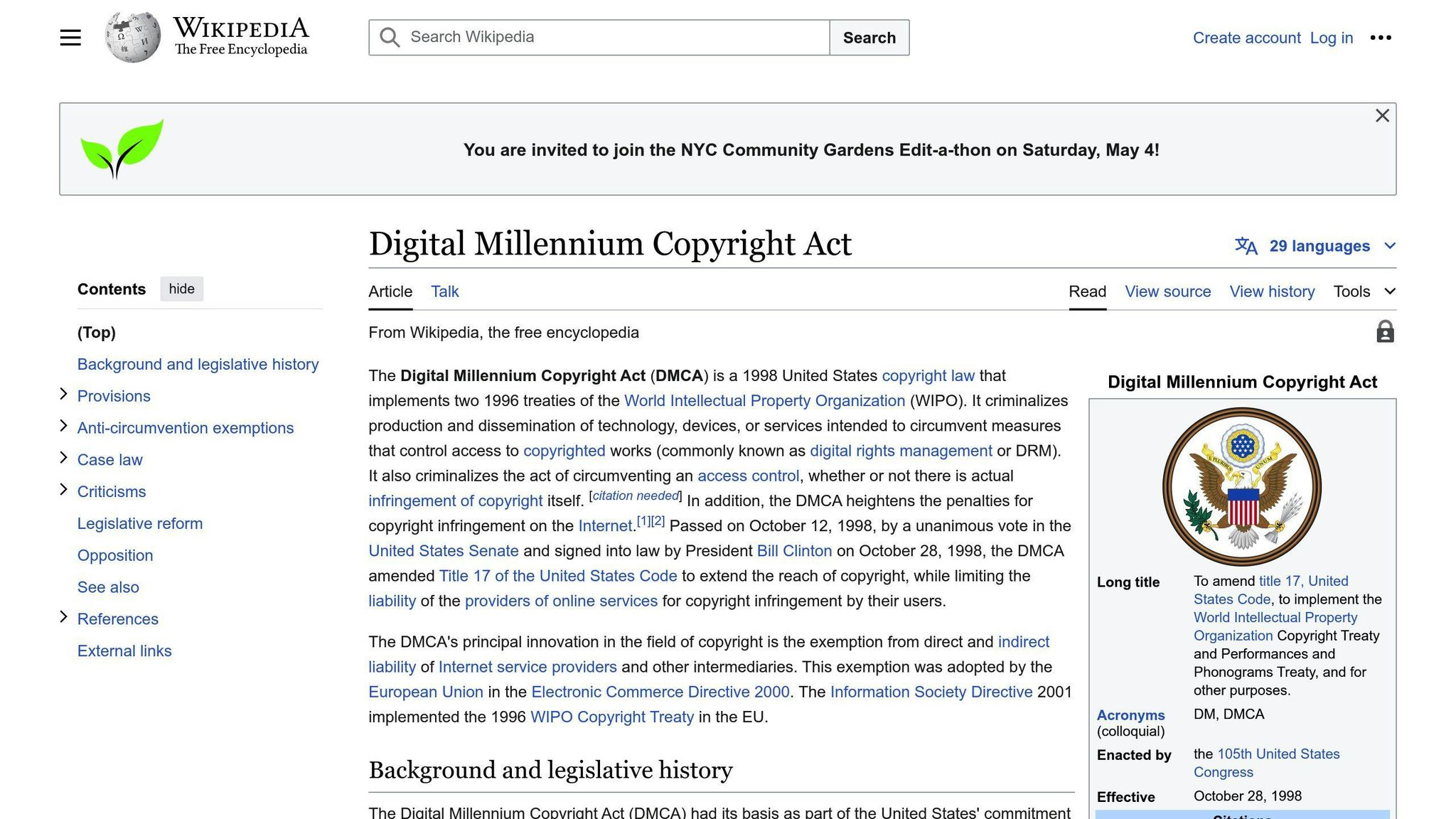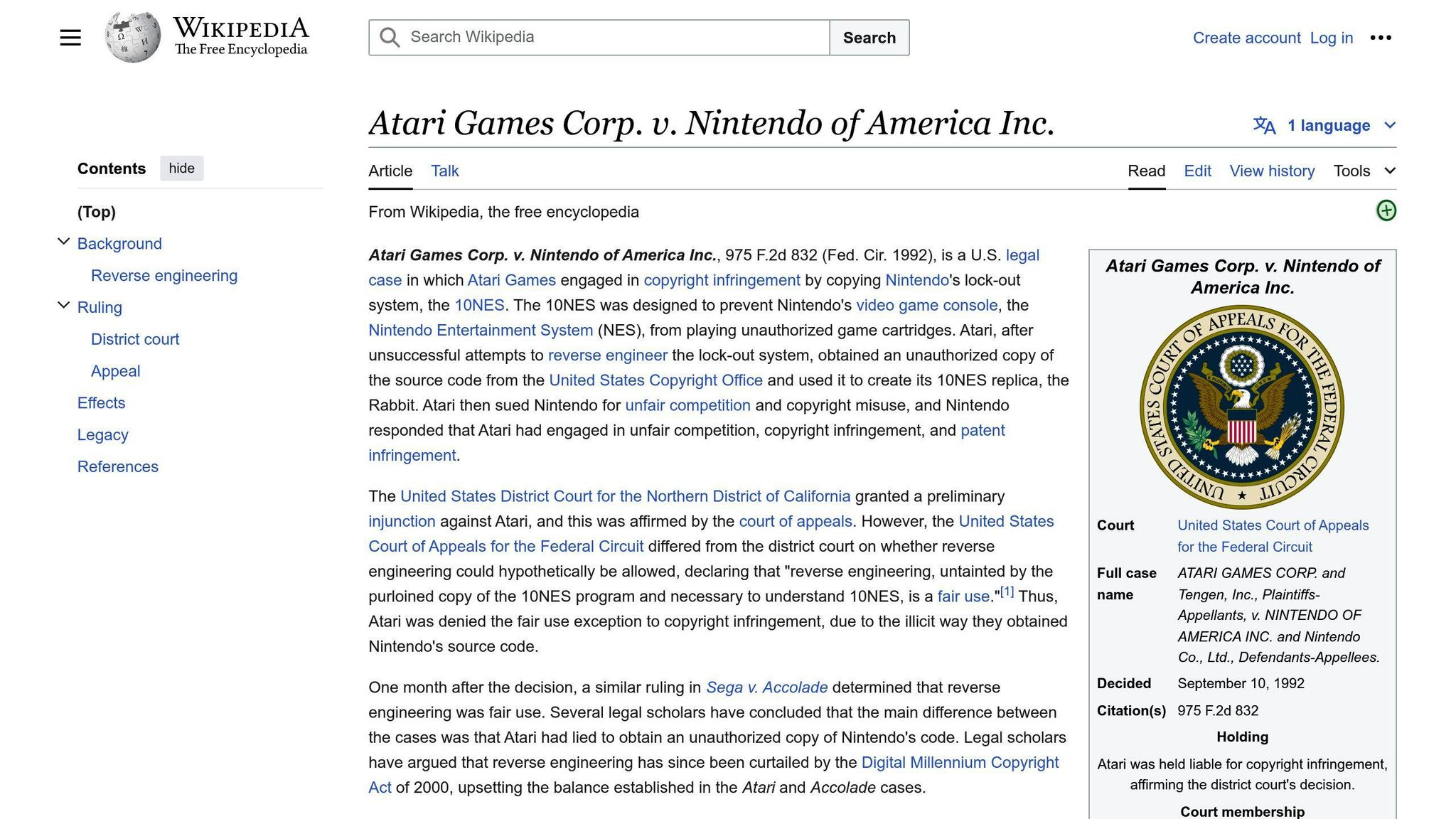Reverse engineering involves analyzing a product, software, or system to understand how it works. While valuable for improving products, ensuring compatibility, and identifying vulnerabilities, it’s crucial to approach reverse engineering carefully and respect intellectual property rights.
If you’re an Enterprise, then we recommend to book a call with us for the best solutions to protect your business.
Here’s a video explainer from YouTube
Key Considerations
- Copyright Law: Allows limited use of copyrighted material for compatibility purposes, including decompiling and disassembling software.
- Trade Secret Law: Permits reverse engineering to uncover trade secrets, but non-disclosure agreements (NDAs) can restrict these activities.
- DMCA: Prohibits circumventing technological measures, but provides exceptions for compatibility and security research.
- Contract Law: EULAs and ToS agreements may include "no reverse engineering" clauses, limiting permitted activities.
- ECPA: Restricts network packet inspection and reverse engineering of electronic communications, with exceptions.
| Intellectual Property | Reverse Engineering Considerations |
|---|---|
| Patents | – Potential patent infringement risks – Fair use if legally obtained and for understanding functionality – Conduct patent search and review claims |
| Copyrights | – Potential copyright infringement, especially for software – Fair use for compatibility purposes – Decompiling and disassembling techniques permitted under certain conditions |
| Trade Secrets | – Reverse engineering can uncover trade secrets – NDAs may restrict reverse engineering activities – Avoid misappropriating trade secrets and comply with laws |
Best Practices
| Legal Considerations | Best Practices |
|---|---|
| Legal Risk Assessment | Evaluate potential legal implications, IP violations, and required permissions. |
| Permissions and Licenses | Obtain necessary licenses, ensure rights to reverse engineer, comply with contracts. |
| Safeguarding IP | Protect trade secrets, prevent unauthorized access, secure environment. |
| Ethical Guidelines | Respect IP rights, avoid unauthorized access, maintain integrity and transparency. |
Before reverse engineering, assess potential risks and obtain necessary permissions or licenses. Protect intellectual property and trade secrets. Follow ethical guidelines and respect others’ rights. For complex or high-risk projects, seek legal counsel.
Laws Affecting Reverse Engineering
Copyright Law
Copyright law impacts reverse engineering, especially for software. The fair use rule allows limited use of copyrighted material without permission, including reverse engineering for compatibility purposes. Decompiling and disassembling techniques are commonly used to analyze software. The Copyright Act of 1976 permits these activities under certain conditions. Additionally, the Digital Millennium Copyright Act (DMCA) allows reverse engineering to achieve compatibility between different computer programs.
Trade Secret Law
Trade secret law views reverse engineering as a "fair and honest" way to discover information. Companies can reverse engineer products to uncover trade secrets. However, non-disclosure agreements (NDAs) can restrict reverse engineering activities. Violating these agreements can lead to legal consequences. Courts have consistently ruled that reverse engineering is a legitimate way to discover trade secrets, as long as it is done through "fair and honest means" (Kewanee Oil Co. v. Bicron Corp.).
Digital Millennium Copyright Act (DMCA)

The DMCA’s anti-circumvention rules impact reverse engineering. While the act prohibits bypassing technological measures to access copyrighted material, it provides exceptions for compatibility and security research. Reverse engineers can legally bypass these measures to achieve compatibility between computer programs or to identify and address security vulnerabilities.
Contract Law
Contract law, particularly end-user license agreements (EULAs), can restrict reverse engineering activities. EULAs often include "no reverse engineering" clauses, limiting a user’s ability to analyze or modify software. Terms of service (ToS) and terms of use (ToU) agreements may also contain similar restrictions. It is crucial to review these agreements carefully to understand the permitted activities.
Electronic Communications Privacy Act (ECPA)
The ECPA restricts network packet inspection and reverse engineering activities, particularly for electronic communications. However, service providers and individuals with consent are exempt from these restrictions. The act aims to protect the privacy of electronic communications, and reverse engineers must comply with its provisions to avoid legal repercussions.
| Law | Impact on Reverse Engineering |
|---|---|
| Copyright Law | Allows limited use of copyrighted material for compatibility purposes, including decompiling and disassembling software. |
| Trade Secret Law | Permits reverse engineering to uncover trade secrets, but NDAs can restrict these activities. |
| DMCA | Prohibits circumventing technological measures, but provides exceptions for compatibility and security research. |
| Contract Law | EULAs and ToS agreements may include "no reverse engineering" clauses, limiting permitted activities. |
| ECPA | Restricts network packet inspection and reverse engineering of electronic communications, with exceptions for service providers and individuals with consent. |
sbb-itb-738ac1e
Intellectual Property and Reverse Engineering
Patents
Reverse engineering patented technologies can lead to patent infringement issues. Patent holders have exclusive rights to make, use, and sell their inventions. Reverse engineering may violate these rights. However, if the patented product is legally obtained, and the reverse engineering aims to understand how it works, it may be considered fair use. Before reverse engineering, conduct a patent search and review the patent claims to determine the scope of protection.
Copyrights
Reverse engineering can infringe on copyrights, especially for software. The fair use doctrine allows limited use of copyrighted material without permission, including reverse engineering for compatibility. Decompiling and disassembling techniques are commonly used to analyze software, and the Copyright Act of 1976 permits these activities under certain conditions. However, reconstructing key elements of a copyrighted work without permission can lead to copyright infringement.
Trade Secrets
Reverse engineering can involve trade secrets, which are confidential and valuable information that gives a company a competitive advantage. Companies can reverse engineer products to uncover trade secrets, but non-disclosure agreements (NDAs) can restrict these activities. Violating these agreements can lead to legal consequences. Ensure that reverse engineering activities do not misappropriate trade secrets and comply with applicable laws and regulations.
| Intellectual Property | Reverse Engineering Considerations |
|---|---|
| Patents | – Potential patent infringement risks – Fair use if legally obtained and for understanding functionality – Conduct patent search and review claims |
| Copyrights | – Potential copyright infringement, especially for software – Fair use for compatibility purposes – Decompiling and disassembling techniques permitted under certain conditions |
| Trade Secrets | – Reverse engineering can uncover trade secrets – NDAs may restrict reverse engineering activities – Avoid misappropriating trade secrets and comply with laws |
Key Court Cases
Several court cases have shaped the laws and practices around reverse engineering. These rulings have significant impacts across various industries.
Kewanee Oil Co. v. Bicron Corp.
The U.S. Supreme Court ruled that trade secret laws cannot prevent "discovery by fair and honest means," such as reverse engineering. This decision established the legality of reverse engineering in certain situations.
Bonito Boats, Inc. v. Thunder Craft Boats, Inc.
The Supreme Court further affirmed the legality of reverse engineering, stating that the "public remained free to discover and exploit trade secrets through reverse engineering of public domain products or independent creation."
SAS Institute, Inc. v. World Programming Ltd.
The Fourth Circuit Court of Appeals held that a software license’s definition of reverse engineering was clear and favored the plaintiff’s broader interpretation. This expanded the scope of impermissible reverse engineering conduct.
Atari Games Corp. v. Nintendo of America

This case established that reverse engineering can be a fair use exception to copyright infringement under Section 107 of the Copyright Act. The court recognized that copying for reverse engineering purposes was permissible when necessary to extract unprotected elements from a copyrighted work.
These key cases have contributed to the development of reverse engineering laws and practices. They provide guidance for companies and individuals engaging in reverse engineering activities, ensuring they operate within legal boundaries.
| Case | Significance |
|---|---|
| Kewanee Oil Co. v. Bicron Corp. | Established the legality of reverse engineering for fair and honest means. |
| Bonito Boats, Inc. v. Thunder Craft Boats, Inc. | Affirmed the public’s right to reverse engineer public domain products. |
| SAS Institute, Inc. v. World Programming Ltd. | Expanded the scope of impermissible reverse engineering conduct. |
| Atari Games Corp. v. Nintendo of America | Recognized reverse engineering as a fair use exception to copyright infringement. |
Best Practices
Legal Review
Before reverse engineering, assess potential legal risks. Identify intellectual property concerns and required permissions or licenses.
Obtain Proper Permissions
Secure necessary licenses to access copyrighted materials. Ensure you have the right to reverse engineer the product or software. Comply with contractual agreements.
Protect Intellectual Property
Take measures to safeguard intellectual property:
- Protect trade secrets
- Prevent unauthorized access to confidential information
- Conduct reverse engineering in a secure, controlled environment
Follow Ethical Guidelines
- Respect intellectual property rights
- Avoid unauthorized access to confidential data
- Conduct activities with integrity and transparency
| Legal Considerations | Best Practices |
|---|---|
| Legal Risk Assessment | Evaluate potential legal implications, IP violations, and required permissions. |
| Permissions and Licenses | Obtain necessary licenses, ensure rights to reverse engineer, comply with contracts. |
| Safeguarding IP | Protect trade secrets, prevent unauthorized access, secure environment. |
| Ethical Guidelines | Respect IP rights, avoid unauthorized access, maintain integrity and transparency. |
Conclusion
Reverse engineering is a complex process with many legal restrictions, intellectual property concerns, and ethical guidelines to consider. While it can be valuable for improving products and systems, it’s crucial to approach reverse engineering carefully and respect others’ rights.
In this article, we covered the legal frameworks governing reverse engineering, including:
- Copyright law
- Trade secret law
- The Digital Millennium Copyright Act (DMCA)
- Contract law
- The Electronic Communications Privacy Act (ECPA)
We also discussed the importance of protecting intellectual property, key court cases, and best practices for minimizing legal risks.
To summarize, it’s essential to:
| Best Practices | Description |
|---|---|
| Assess Legal Risks | Evaluate potential legal implications, IP violations, and required permissions. |
| Obtain Permissions | Secure necessary licenses, ensure rights to reverse engineer, comply with contracts. |
| Protect IP | Safeguard trade secrets, prevent unauthorized access, work in a secure environment. |
| Follow Ethics | Respect IP rights, avoid unauthorized access, maintain integrity and transparency. |
Before reverse engineering, assess potential risks and obtain necessary permissions or licenses. Protect intellectual property and trade secrets. Follow ethical guidelines and respect others’ rights.
For complex or high-risk projects, seek legal counsel. Reverse engineering requires a tailored strategy based on the specific needs and risks of your project.
FAQs
Is reverse engineering a protocol legal?
Reverse engineering is generally legal, but there are laws and regulations you must follow to ensure you do it ethically. Understanding and adhering to these rules can be confusing.
What act allows reverse engineering?
The Digital Millennium Copyright Act (DMCA) Section 103(f) allows a person who legally possesses a program to reverse engineer it if necessary to achieve interoperability. This protects professionals who wish to reverse engineer products solely for research purposes.
Is there a violation of intellectual property rights in reverse engineering?
Reverse engineering copyrighted software or digital content may violate copyright laws. Computer programs, source code, and artistic works are protected by copyright. Unauthorized analysis and reproduction of copyrighted materials could be illegal.
Do patents protect against reverse engineering?
| Patents and Reverse Engineering |
|---|
| Reverse engineering is generally legal. |
| In trade secret law, reverse engineering is an allowed method to discover a trade secret, similar to independent development. |
| However, in patent law, the patent owner has exclusive rights to use, own, or develop the patented invention. Reverse engineering is not a defense against patent infringement. |
Can an EULA prevent reverse engineering?
Yes, End User License Agreements (EULAs) often include clauses that prohibit reverse engineering of the software or product. For example:
- "Do not reverse-engineer this product."
- "Using this product means you will be monitored."
- "Do not criticize this product publicly."
Customers must follow the EULA terms, which may restrict reverse engineering activities.

